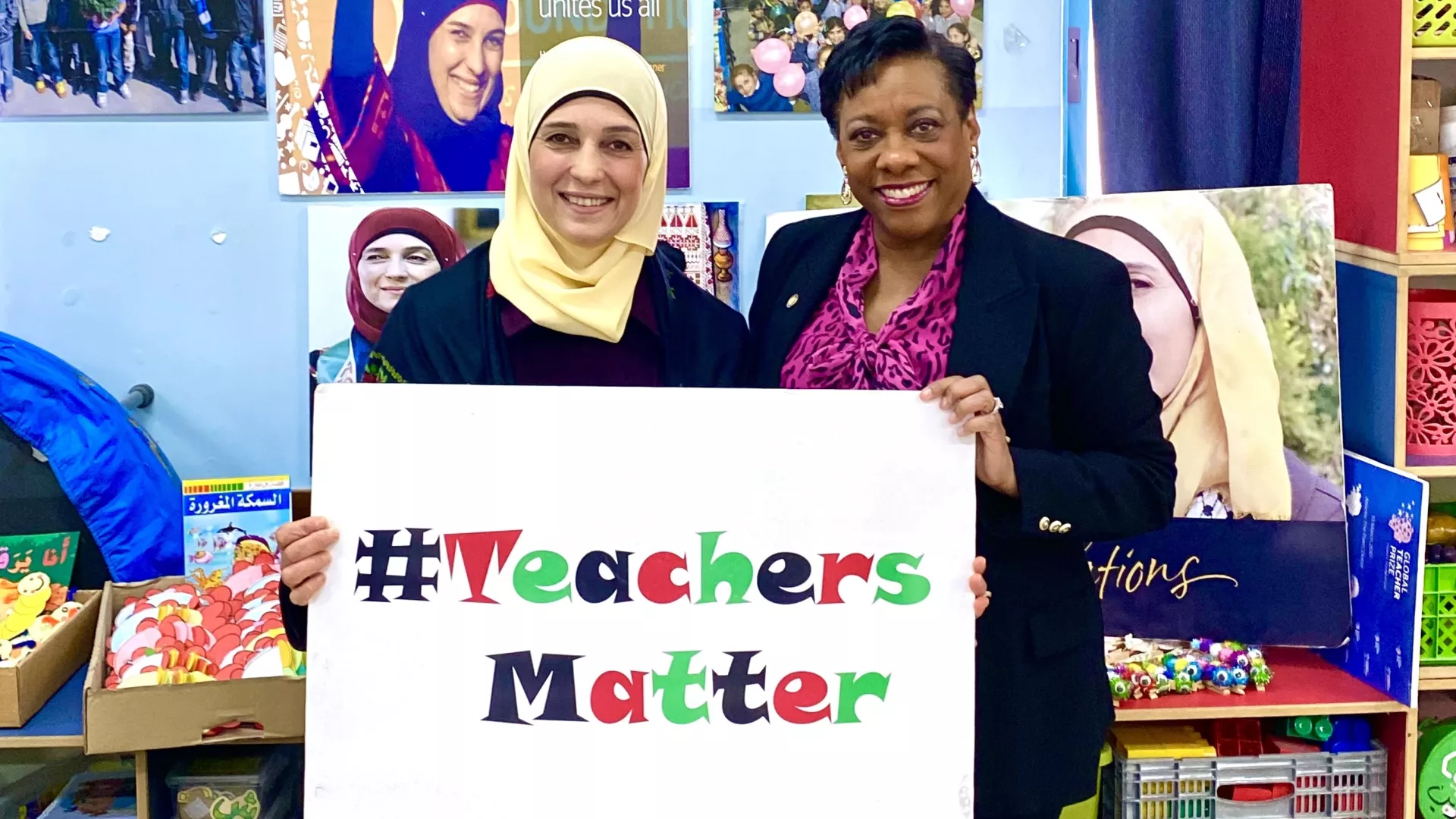As the leader of the largest union in the country, representing nearly 3 million educators, I was proud to accept Education International’s invitation to participate in a mission to Israel and Palestine to meet with educators, students, union leaders, UN agencies, and government officials. I embarked on this journey to deepen my own understanding of their education systems and the role education unions play in the region, and to identify areas of shared interest and solidarity between our unions.
A colleague told me I would come away from this trip with more questions than I had at the start, and she was right, but I also left deeply humbled by the extraordinary work our union siblings are leading and felt connected to their sense of purpose and the aspirations they have for their students and the future.
Come along on my journey with me! Follow my daily journal below.
Day 1: Tel Aviv
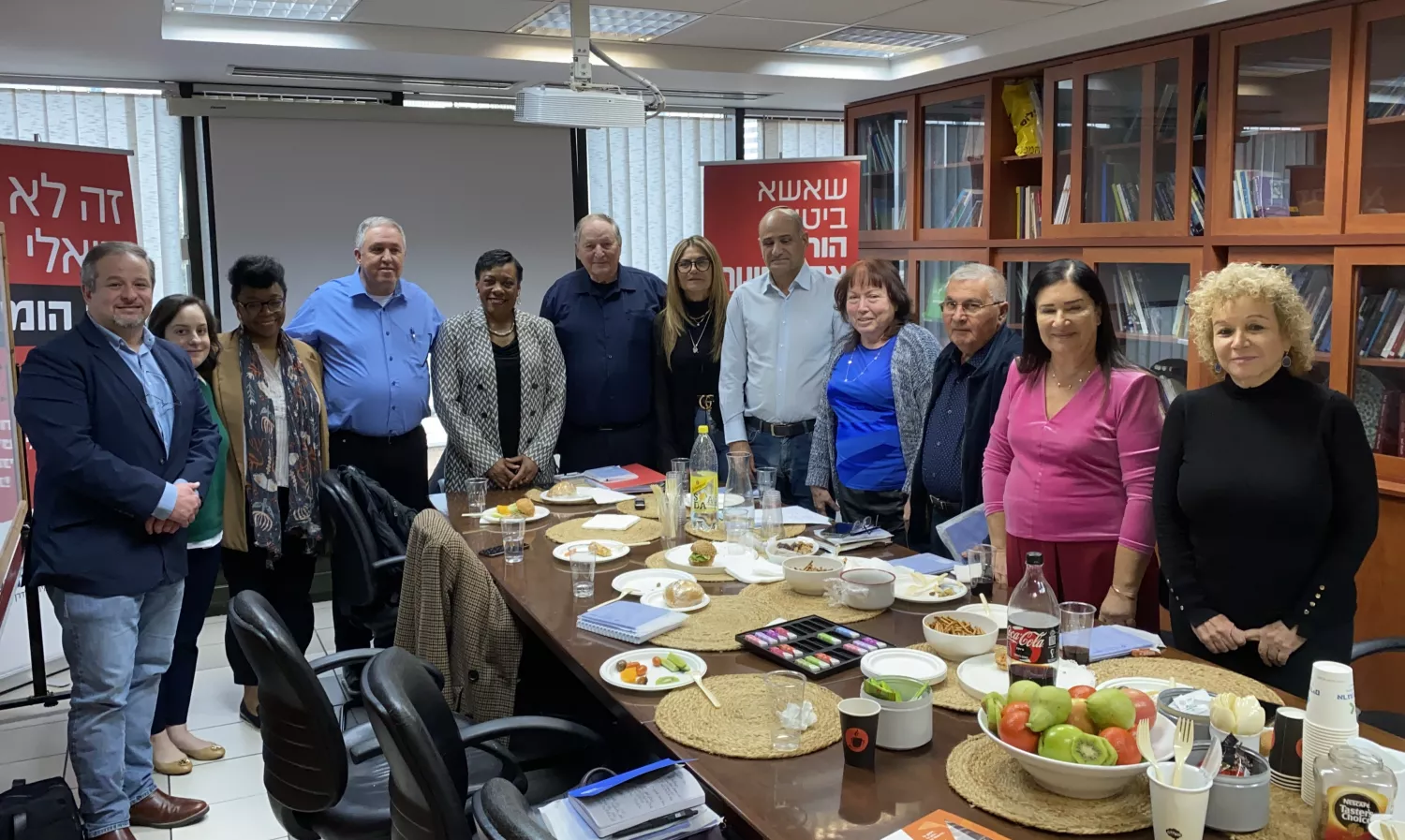
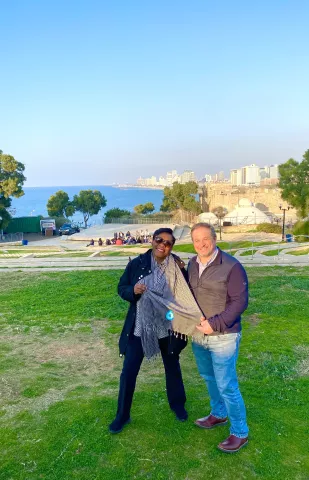
My journey began in Tel Aviv with a meeting with leaders from the Association of Secondary School Teachers of Israel (ASSTI). Like the U.S., Israel has two national teachers’ unions. ASSTI represents over 90,000 teaching staff members in post-elementary education, including middle schools, high schools, and universities. President Ran Erez, who is proudly still teaching after several decades, warmly welcomed us and shared the union’s history, structure, and current priorities.
It was inspiring to learn about the big wins ASSTI has made for its members regarding salary and working conditions, despite difficult and long contract negotiations. As similar as we are, we did discuss one area where we diverge significantly: the union’s role in helping elect pro-public education candidates. ASSTI strongly believes it is important for the integrity of its work to stay out of politics. I told them that for us, it’s critical for our members to engage until U.S. politicians stop trying to control our classrooms and undermine public education.
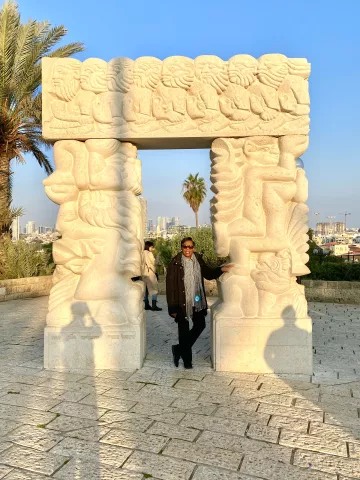
It was also fascinating to hear from ASSTI leaders about Israel’s teacher shortage. Israel has the highest birth rate among OECD (Organization for Economic Cooperation and Development) countries as of 2020 and the second highest youth population concentration. Though recent wins, including bonus incentives, have moderately helped with early career educator retention, there are dwindling numbers of students pursuing education degrees, and they anticipate a sweeping retirement wave of STEM (Science, Technology, Education and Mathematics) teachers in the next several years that will exacerbate challenges with class size and teacher availability.
The rest of my day was spent reflecting on my learnings from the morning’s discussion and exploring Jaffa, the southern and oldest area of Tel Aviv-Yafo. Walking through Jaffa, we learned about the state and city’s history from locals and saw many notable landmarks.
Day 2: Tel Aviv & Jerusalem
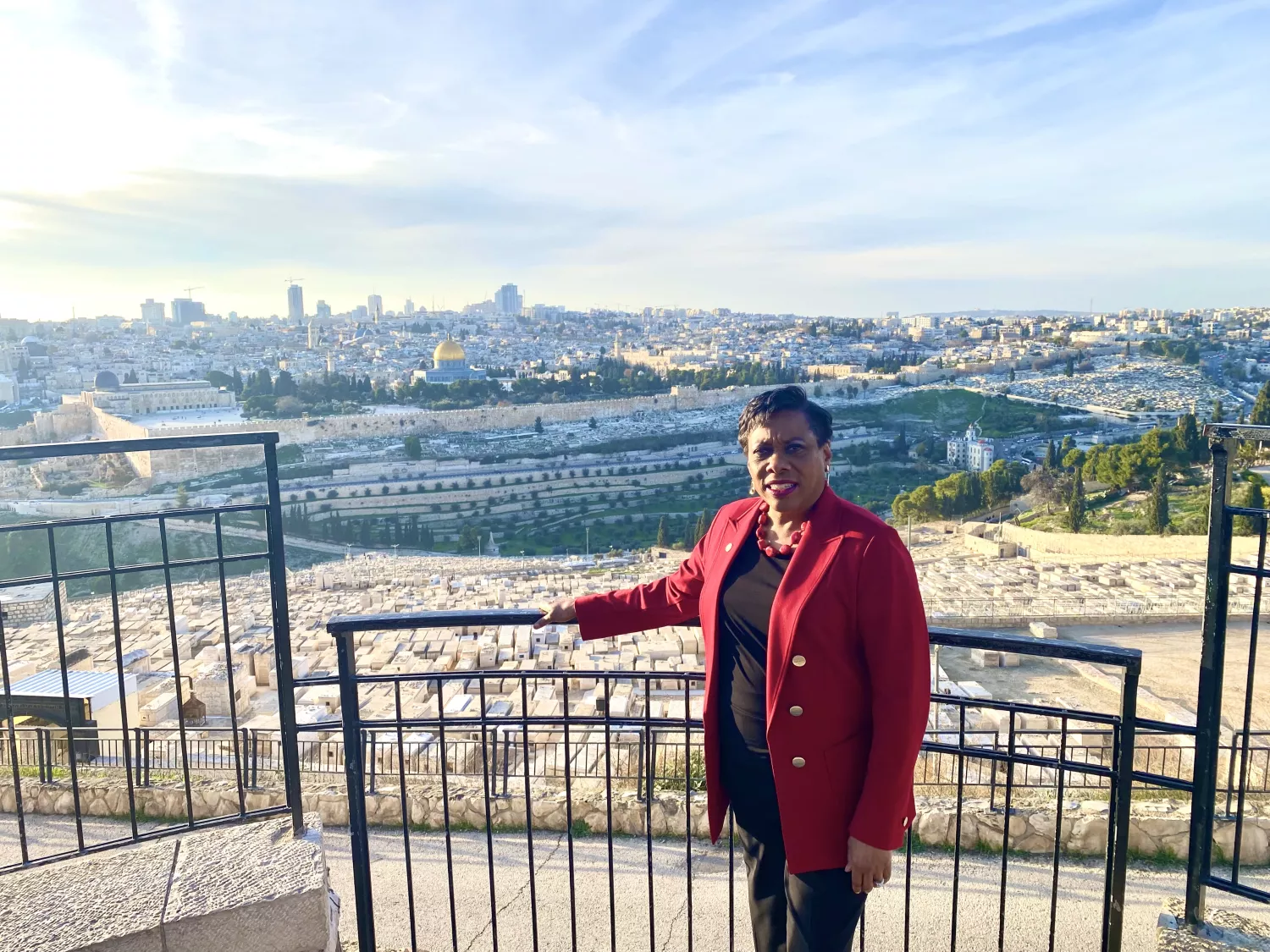
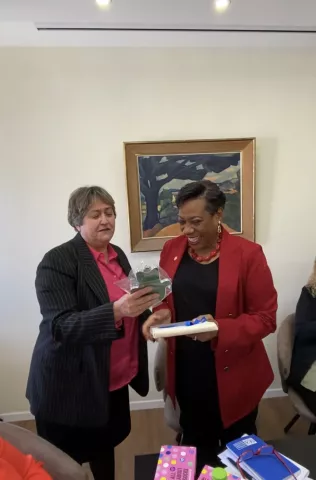
My second day was filled with shared stories and learnings from a wide variety of perspectives. In the morning, we headed to the Israel Teachers Union (ITU) headquarters to meet with ITU leaders for a conversation about the current issues facing Israel’s teachers and students. In our discussion, ITU Executive Board members and General Secretary Yaffa Ben David enthusiastically discussed their recent successful campaigns and contract negotiations. ITU leaders also spoke about the student mental health concerns that have increased dramatically since the pandemic began.
We also talked in detail about the role NEA is playing to expand and support strong community schools in the U.S. that support children and families at multiple levels and beyond academics. Our conversation about community schools added a deeper sense of meaning and connection to my last stops in Tel Aviv, where we visited schools with ITU leaders. We spent time talking to students, administrators, and teachers from HaYarden Elementary School. HaYarden is a unique school that integrates students from refugee and immigrant families with local students and provides a considerable range of supports for students and their families.
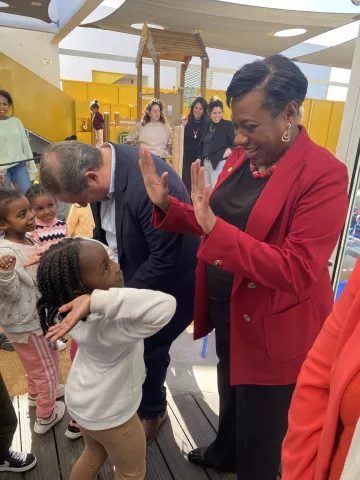
In the afternoon, we departed for Jerusalem. I had heard from so many others who had traveled in this region that visiting Jerusalem would be especially moving. And it was. So much history. So many intersections of diverse faiths. So many scars from centuries of turmoil and struggle. Such beauty. I immediately felt a connection to the earth beneath me, the majestic vistas, the religious and sacred sites, and the rich cultures of the people of this land. I thought a lot about my dad during my visit. He taught history in the Philadelphia Public School system for almost 30 years. And he taught me. I wish I could have asked him questions about both the academic and spiritual experience I had in Jerusalem. My emotions were high. My feelings were complex. It was a profoundly moving day.
We had the honor to meet with officials from the United Nations Relief and Works Agency for Palestine Refugees (UNRWA), which works to help Palestine refugees learn, grow, live (and thrive even), under their difficult, and often dangerous circumstances. As the oldest and largest UN agency, they have provided services to Palestinians in refugee camps and in the occupied territories for over 70 years. Currently, the agency program serves roughly 1/3 of registered Palestine refugees, over 1.5 million people.
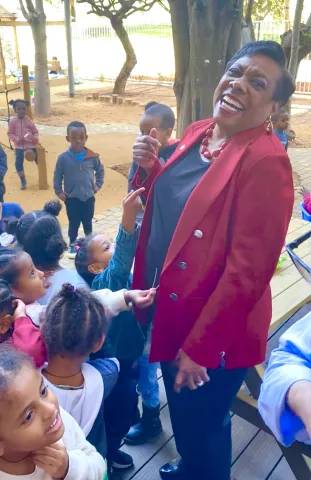
Education is the agency’s priority work. Adam Bouloukos, Director of UNWRA Affairs in the West Bank, shared the program’s impact and capacity as well as the current circumstances inhibiting the agency’s ability to provide more robust and responsive services. For example, the often-harsh realities facing the people in Palestine leads to an extremely high need for social and emotional support for both students and teachers. However, the agency and local workforce can neither resource nor staff such a service. The UNWRA team shared a sentiment that is deeply profound and familiar to education professionals around the world: “We know what’s required to meet needs on the ground. The challenge we face is resource constraints.”
Our last stop for the day was to meet with Kids4Peace Jerusalem to learn about their peace-building work. Education Director Ittay Flescher explained the segregation and societal divisions in Jerusalem that have led to conflict and distrust among Palestinian, Arab, and Israeli communities. Kids4Peace seeks to bridge these gaps between Palestinian and Israeli students starting at the interpersonal level by fostering mutual understanding through relationship development and conflict resolution. The organization also provides a leadership development program to support students in advancing their peace-building efforts.
No matter where you stand in the world, one thing that is universally beautiful and uplifting is the smiling faces of children who are excited to learn and know that the caring adults around them—the teachers, support staff, and administrators—saw, loved, and supported them. The students at HaYarden seemed as happy to see us as we were to see them. And they gave the most amazing hugs and enthusiastic high-fives!
Day 3: Jerusalem & Ramallah
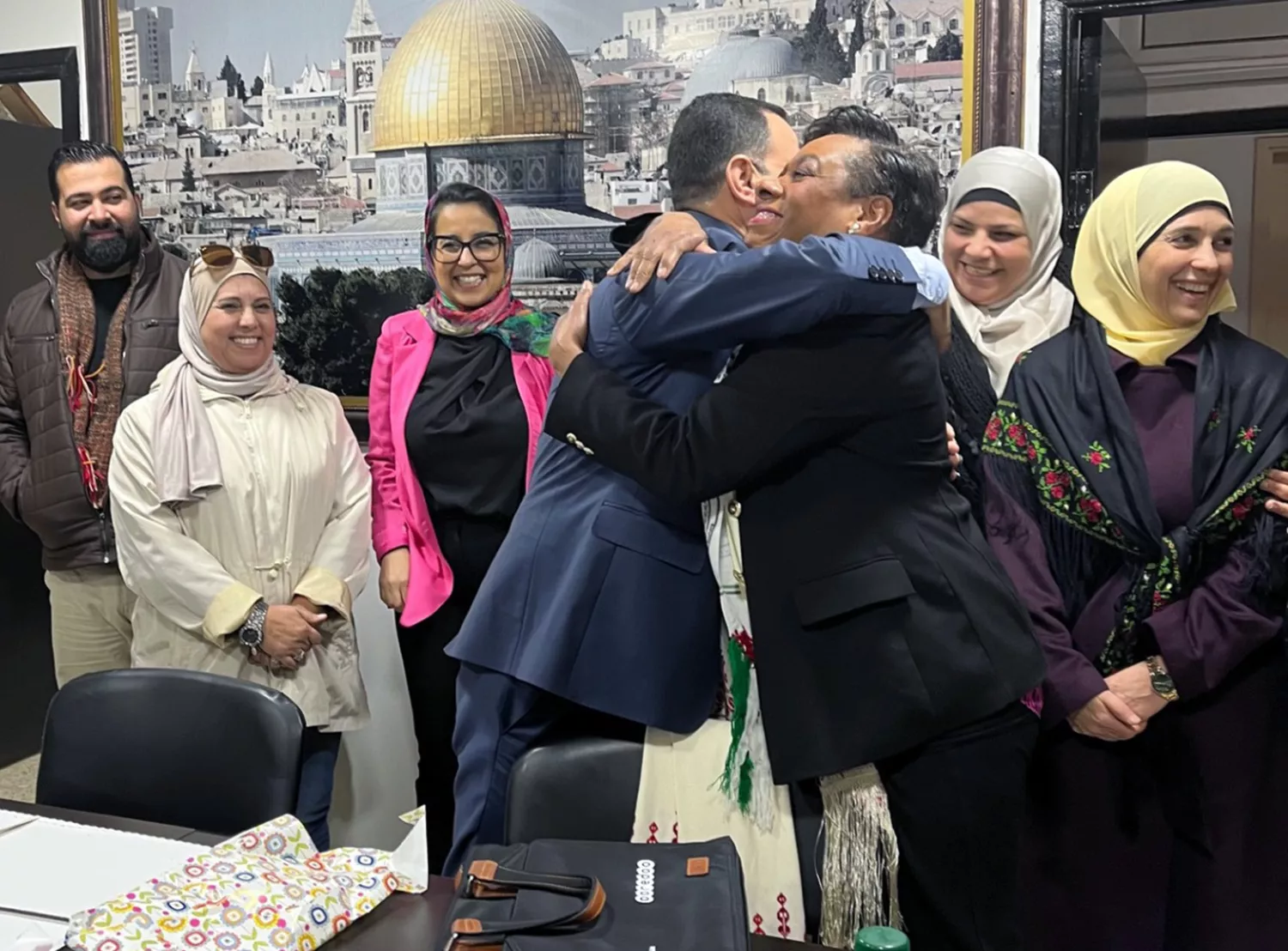
The next day we were off to the West Bank to meet with leaders and members of the General Union of Palestinian Teachers (GUPT). Upon arrival in Ramallah, I was welcomed by GUPT General Secretary Saed Erziquatt, and we went together for a school visit, which included stopping by the classroom of Hanan Al Hroub, a GUPT member and the second winner of the Varkey Foundation Global Teacher Prize. Hanan, the ever proud and protective teacher, shared her students' amazing and creative projects while telling their stories of fear and trauma. Her work goes beyond the borders of her classroom as she provides training for her colleagues on helping their students not just survive, but find joy in learning and dreaming about their future.
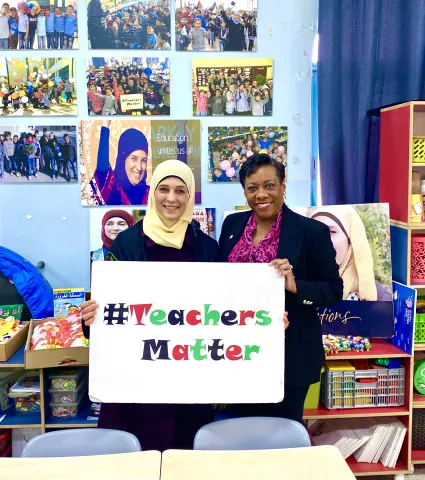
In our scheduled meeting and throughout the day, GUPT leaders and members shared their uniquely challenging experience as Palestinian teachers. Despite these challenges to education, professionalization, and safety, GUPT is developing and implementing programs to support their members and to provide quality education to their students. Notably, they have secured a minimum wage for early childhood educators that is 60% higher than their current average wage. GUPT has made a commitment to create leadership development opportunities for new member leaders, and women in particular, within their union. Salary increases remain a major priority for the organization, but they are expanding their focus to also include professional development programs and advocacy for better working conditions.
Financial constraints have limited the government’s ability to pay for public services and programs, and Palestinian educators have received the brunt of this reality. It is common for teachers’ salary payments to be withheld for months and eventually cut, despite contract agreements, which was the situation facing GUPT members during my visit. Palestinian teachers went without pay for more than a year during the pandemic and now receive just 80% of their negotiated salary!
Upon their request, we joined GUPT leaders in a show of union solidarity for two meetings with government officials as we helped them advocate for the full payment of their salaries. First, we met with the Palestinian Minister of Education, who as a former professor, stressed his commitment to education and education professionals. Second, we met with the Prime Minister of Palestine, Mohammad Shtayyeh, to support GUPT’s advocacy for their educators. The Prime Minister was clear in his conviction that education is crucial to the State of Palestine and that educators are the backbone of the nation. These conversations made clear the cultural and political importance that Palestinians place on education. Unlike the U.S. and so many other countries—where we struggle to attract people to the education sector—teaching is still a sought-after career, despite the financial instability.
When the meetings and scheduled visits concluded for the day, our union friends showed me around Ramallah and generously shared their food, stories, and culture—and helped me celebrate my birthday. At every meal we shared in Ramallah (I counted five), invariably a cake alit with candles would emerge from the kitchen followed by joyous singing!
My learning journey exceeded my goals. As a leader, I was again reminded of the importance of continued discovery and exploration: questioning your assumptions and expanding your knowledge, experiences, and relationships. As I continue to lead, this enriching experience will help guide my decisions and position NEA to embrace its responsibility as a racial and social justice advocate—at home and around the world—in a way that reflects the profound trust that has been placed in us as educators.
While the current climate in this region of the world is one that exacerbates challenges and makes solutions elusive, we must hold fast to our ability to hope and the courage to act. And I believe that if there is a belief in the plausibility of the possible—hope—it must be seeded and nurtured in the young people trying to find a way to live, learn, work, play, and find peace. Together.
So much has happened in the region since my visit earlier this year that underscores the fact that democracies depend on high-quality public education and the collective independent voice of educators and union. Israeli Prime Minister Benjamin Netanyahu and his governing coalition—the most extreme and ultranationalist in Israel’s history—are implementing a totalitarian playbook that eliminates democracy and violates human and civil rights. Educators and their unions are a major force for effectively pushing back and protecting democratic institutions.
We stand with all those advocating for civil and human rights and pluralist democracies in the region.
We commend our Israeli trade union colleagues on their success and role in the powerful collective action and mobilization of the Israeli people to protect democratic institutions.
We congratulate our Palestinian trade union colleagues in finally securing their compensation and continue to stand in solidarity with them to break this pattern of withheld pay.
